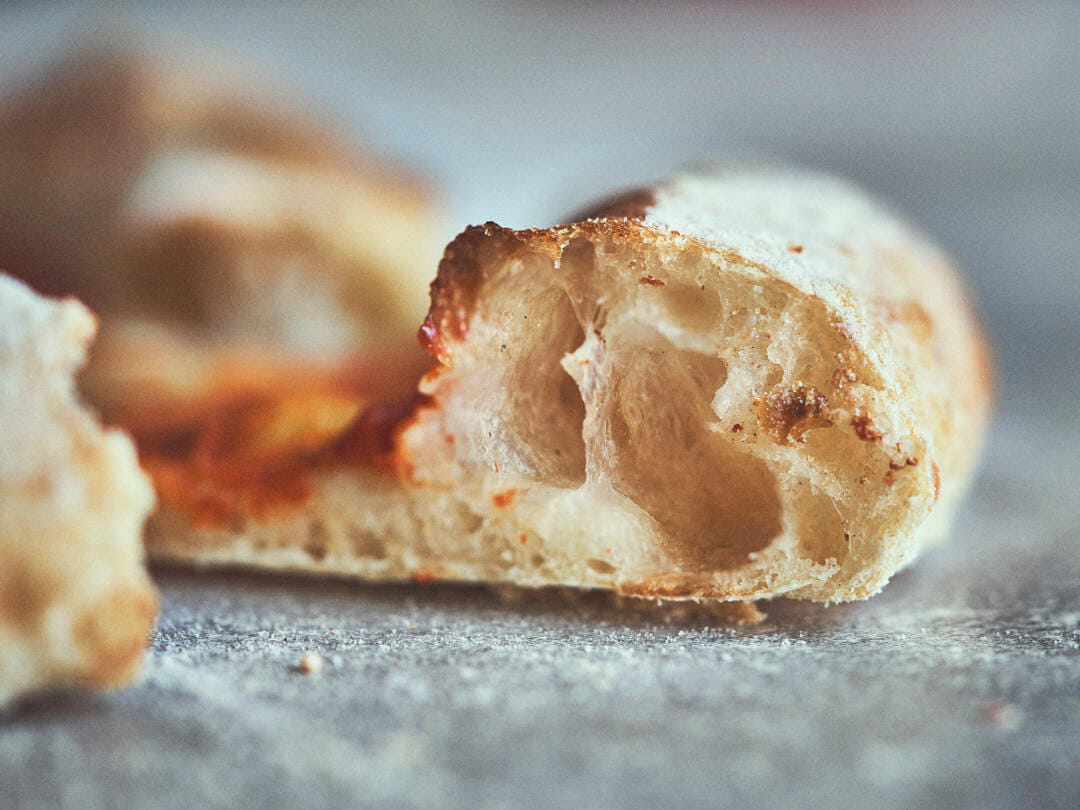
What do Polish emigrants have in common with Neapolitan pizza makers? Quite a lot! Many roads lead to Rome... uh, to a really awesome pizza. And the version with a poolish, a type of pre-dough, in combination with looots of time and just a tiny bit of yeast is one of the most relaxing! The name gives it away: This pre-dough was invented, or first mentioned, in Poland. From there, it traveled in the 19th century with Polish emigrants through Austria to France. And there, it found a huge fan base as Poolish (or Pouliche).
The pre-dough with equal amounts of water and flour requires very little yeast due to the long fermentation time, giving baguettes and the like that extra crispy factor. And it makes doughs extremely smooth to work with. Which brings us back to the topic of pizza because: Relaxed preparation, perfect shaping, and a maximum crispy result? Perfetto! Definitely try it out at your next pizza session — the difference this stuff will make when shaping your pizzas will knock your socks off!
MY TIP:
Even though they are quite similar (and distinguishing between them can sometimes be tricky): You shouldn't confuse Poolish with Italian Biga. A Poolish is always started with equal amounts of flour and water and left to rise with a small amount of yeast until it is further processed into the main dough. In contrast, the Biga is firmer because it contains on average twice as much flour as water.
Ingredients
For 4 servings
For the poolish
For the main dough
Equipment
nutritional values per serving
Preparation in 8 steps
For the pre-dough: Mix flour and water and combine in a tall container with the yeast. Let it rise at room temperature for approximately 12 hours, until the volume has doubled.
For the main dough: Mix pre-dough, flour, and water. Finally, add the salt and knead everything. Cover and let rest for 10 minutes.
Place dough on a lightly floured work surface and knead for about 20 minutes until smooth (in the stand mixer: first 3 minutes at low speed and then 4 minutes at high speed). The dough should be elastic, easily detach from the edge of the bowl, and not tear. Cover and let rise at room temperature for 6 hours.
Stretch and fold after 1 hour and after 3 hours (a total of 2 times). To do this, grab one side of the dough and pull it upwards, then fold it into the center and press down. The dough should be stretched as much as possible without tearing. Rotate the bowl by 90 degrees and repeat 7 more times until each side has been folded into the center 2 times. Then cover the dough again and let it continue to rise.
After 6 hours, divide the dough into 4 equal portions, shape them into balls, and then round them off. To do this, rotate the dough ball loosely between the hollow of your hand and the work surface counterclockwise until the dough has formed a smooth surface.
Brush a baking sheet with olive oil, place dough balls at a distance on it and brush with oil. Wrap the baking sheet with plastic wrap and let the dough balls rest in the refrigerator overnight or for up to 48 hours.
Remove from the refrigerator one hour before processing. Shape dough balls into a round pizza on a lightly floured work surface by pressing and pulling with your hands from the center outwards. Leave about 3 cm of edge.
Then top the pizza dough as desired and bake.
